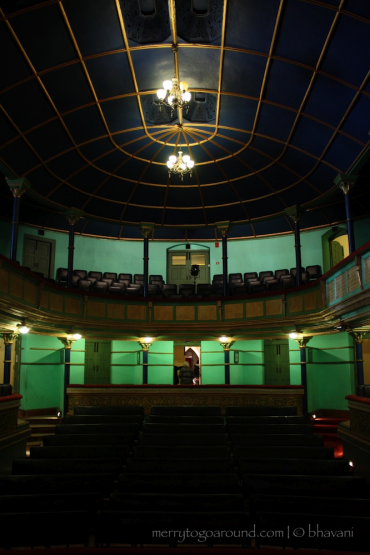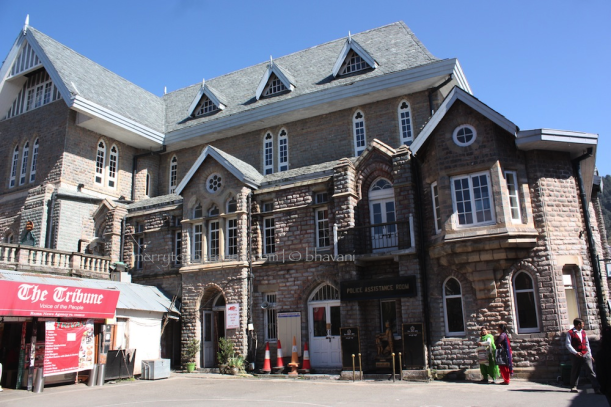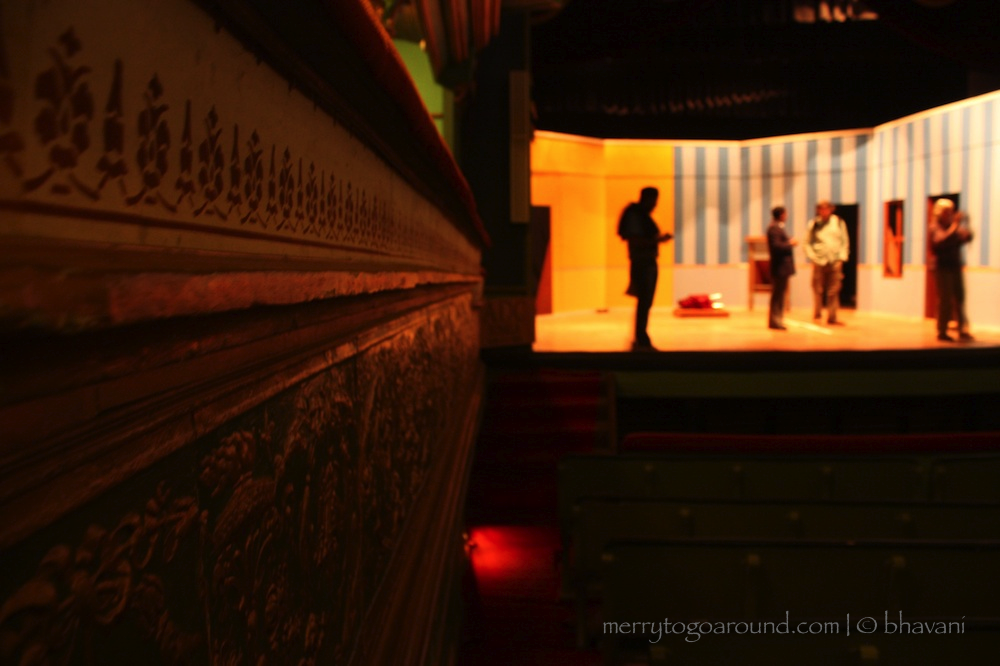Gaiety has got to be one of the complicated words in English, or at least for me. I always mess up the ‘e’, then need to lean backwards and stare at the word till it says I’m missing an ‘e’ or its ‘i’ before ‘e’… The actual Gaiety Theatre in Simla is not missing anything, and if you haven’t been there then you’ve bypassed a charming experience of vintage wonder. And sorry, but you are going to HAVE to visit Simla again – that’s how lovely I think it is!
Gaiety sits in a narrow section of mall road and you might even just walk by it, thinking it’s another old building. It lies just before the largish square in front of the town hall. This theatre opened in 1887 and was designed by the architect who also designed the Viceregal Lodge . The theatre was formally inaugurated with a performance in 1888 and has since then has showcased productions of many renowned theatre artists of India including KL Saigal, Shashi Kapoor, Jennifer Kendall and even Anupam Kher.
The world outside is the mad, bustling town of Simla. You take you ticket, walk inside a door and it closes behind you. The room you have entered is dimly lit and it takes a couple of minutes for your gaze to adjust to the light and then you can see the stage to one side… low, wooden chairs with green leather covering them all along the central pit of the theatre, and the galleries to either side. The dark blue ceiling with golden designs, the intricate panels along the side of the main seating area… phew… there is a lot to take in, and when you look back at the main door, it feels like a giant port-key (Ahem..a Harry Potter reference!). You make your way to one of the chairs, and sit down till the guide is ready to take you through the history.
Dressed in a crisp dark suit, the guide tells you about the history of Gaiety. He tells you stories of it being built, he tells you about the beautiful plays it hosted, he tells you about the well-dressed guests who would throng these very halls. When the British left, as India got back on its feet, these kind of buildings were ignored and fell to great disrepair. I’d like to believe there was a lot of nation building to do and also, my theory is that there might have been some kind of repression, the need to forget the colonial past and in that, the need to disregard all structures from that time…
The restoration process at Gaiety began some years ago and they ensured every piece, every little inch of it was as good as the original. It was restoration work in the truest sense, hard to find across all monuments in India.
While you listen and take in this information, you are surrounded by gorgeous hues of light aqua green, dark Prussian blue and bright gilded gold decorations – it all looks simple yet so grand. And stylish even today!
There are panels all along the sides of the seating area. These were made with papier-mache – and looking at the intricate designs you would hardly think it was papier-mache! They were specifically designed to address the acoustics of the theatre. “You don’t need mikes here,” the guide says with great joy! Behind that panel is a 1 foot deep cushion of air, and all these elements help reflect sound. I might not have understood it accurately, but the science behind it sounded marvellous and so sensible.
As you walk around, you discover little ducts in the wall that were the fireplaces that warmed the audience in the cold Shimla winters. You walk onto the stage and look at the old curtain, that still drops down from the ceiling. You explore the green room, walk about the stage, say a few lines in dramatic fashion and click pictures to preserve for posterity. Then reluctantly, you head upstairs. Don’t worry, the treat continues. There are two main exhibits here – one with pictures of the restoration – how it was before the restoration, and the second – a series of pictures from the Indian Independence movement.
You walk out of the theatre filled with stories, the charm of the theatre and the smell of the Raj lingers on – but there is the seed of today, in the restoration, in the exhibits and in your presence.
Close your eyes. Let’s go back to 1888 and the opening performance. The grand theatre throwing open its doors to the people of Simla. You are there wearing a lovely gown of mauve with lace running along the sides or dressed in gorgeous sari representing the elite of your country. Throngs of people dressed in their best clothes. An equally well-turned out young gentleman takes your hand and guides you into the theatre to your seat. The curtains go up and the show begins…
How to make it happen?
- Open on all days of the week
- Fixed timings for the guided tours, the guide definitely has a lot of information and there is no other way to go about it
- The ticket for Indians is Rs. 10 with a separate fee for a still camera
- Visit the website for more information: www.gaiety.in
Bhavani is a traveler by choice, photographer by interest and writer by desire. She crafts tours at Audiocompass.In and blogs at merrytogoaround.com.








